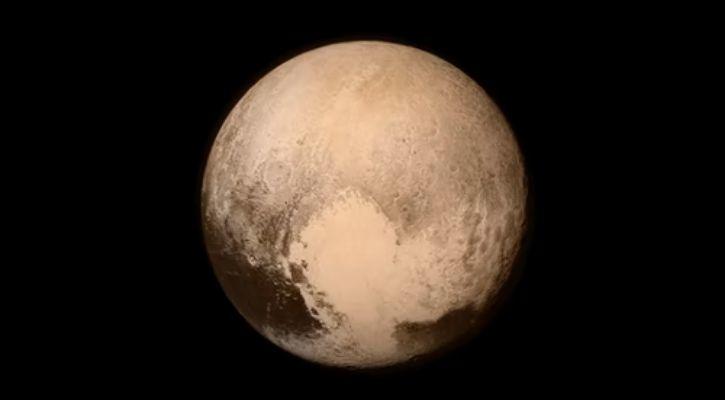Scientists have discovered that Pluto's atmosphere is undergoing a strange transformation, and it has already begun to disappear.
The icy dwarf planet, which lies more than 3 billion miles (4.8 billion km) from Earth in the Kuiper Belt, caught the attention of astronomers when it passed in front of a star in 2018.
With Pluto's backlit stars lit up, the team of scientists was able to make observations of the dwarf planet and its atmosphere. And so they came to a surprising conclusion in a new study, where they found evidence that Pluto's atmosphere is starting to disappear.
The atmosphere of a dwarf planet, like Earth, is mainly composed of nitrogen.
On Pluto, the atmosphere is supported by ice vapor pressure on the dwarf planet's surface. So, if the planet's ice warms, it could dramatically change the density of its atmosphere, according to a statement from the Southwest Research Institute (SwRI).
For the past 25 years, Pluto has been constantly moving away from the Sun, so its surface temperature has been dropping. This made the small orb's atmosphere cooler, becoming closer to the Sun in other parts of its massive, irregular orbit.
It takes Pluto 248 Earth years to complete one complete orbit around the Sun, and its closest point to the Sun is 20 AU (the distance from the Earth to the Sun).
As of 2018, even though Pluto has moved away from the Sun, Pluto's surface pressure and atmospheric density continued to rise. This is due to a process called thermal inertia.
And Pluto had residual heat when it was closer to the sun. However, the thermal inertia is starting to fade, and as the dwarf planet gets colder, more of its atmosphere will freeze back on its surface and "disappear".
An analogy to this is the way the sun heats the sand on the beach, said Dr. Leslie Young, a scientist from the Southwest Research Institute who specializes in modeling the interaction between the surfaces and atmospheres of icy bodies in the outer solar system.
"The sun's rays are most intense in the afternoon, but the sand then continues to absorb heat during the afternoon, so it is hotter in the late afternoon," she explained. "The persistence of Pluto's atmosphere indicates that nitrogen ice reservoirs on Pluto's surface were Warm by heat stored below the surface. The new data shows that it is starting to cool."
This strange phenomenon was observed using telescopes in the United States and Mexico to observe the atmosphere of Pluto as it passed in front of a star.
The occultation event, which lasted only two minutes, allowed the dwarf planet's atmosphere density to be measured by tracking the rate at which the star disappeared and reappeared.
"Scientists have used occultism to observe changes in Pluto's atmosphere since 1988, and it is an outdated and ramshackle technique in the world of astronomy," said Dr. Elliot Young, Senior Program Director in the Department of Space Science and Engineering at the Southwest Research Institute (SwRI).
"NASA's New Horizons mission obtained an excellent density profile from its 2015 flyby, consistent with a doubling of Pluto's atmosphere every decade, but our 2018 observations do not show a continuation of this trend from 2015," he added.

